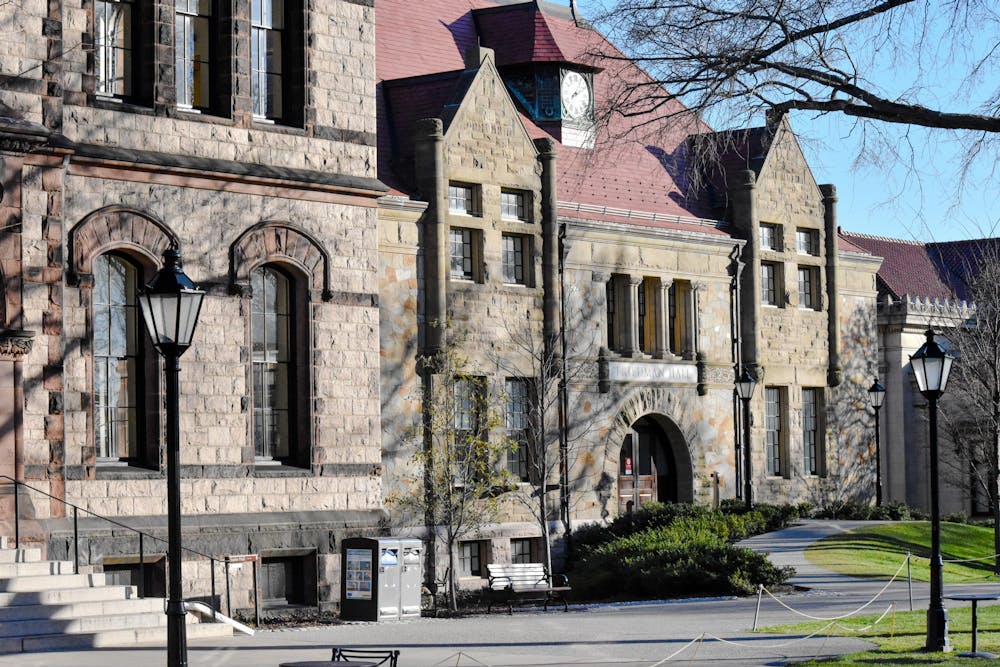The Open Curriculum gives students the option to explore many paths of study before declaring a concentration in their sophomore year. For students seeking to connect with the academic departments they are concentrating in, Departmental Undergraduate Groups aim to “build a sense of community within the concentration” through student-run events, according to the DUG website.
The Herald spoke with students and DUG leaders about how DUGs have shaped concentration experiences on campus.
Charlotte Haq ’24 is a co-leader of the ethnic studies DUG, which was absent for multiple years until this fall due to “a lot of messiness” within the concentration, she said.
“Our concentration advisor kept switching (because) our main (advisor) was on leave,” Haq said.
Upon the return of the regular ethnic studies DUG advisor — Adrienne Keene, assistant professor of American studies and ethnic studies — an email was sent to current concentrators to “get the DUG back up and running,” she added, leading Haq to reach out and become a co-leader.
“So far, our duties have been planning the budget … and brainstorming activities,” Haq explained. One of the DUG’s first activities included a trick-or-treat celebration for Halloween to help “get the DUG off the ground.”
“We wanted to (plan) a breakfast to bring everyone together to meet other concentrators,” Haq said. “Since (the concentration) is so small, it’s hard to meet,” she added, emphasizing the importance of concentrators having “ethnic studies pride” because “no one really knows” about the department.
“To this day, I’ve never really been able to talk to an upperclassman ethnic studies concentrator, which is difficult because (ethnic studies) … doesn’t put you on route to one specific job,” she said.
Haq hopes the reestablishment of the DUG will give underclassmen the chance to have mentors within the concentration so they can “understand what they want to do with the degree,” she added.
Neuroscience DUG leader Leona Hariharan ’23 declared her concentration in neuroscience as a first-year, given that exploring the subject was something that she “always wanted to do.” She applied to be on the DUG board her sophomore year, hoping to help address a “lack of undergraduate involvement” in the department’s Diversity and Inclusion Action Plan, she said.
“I initially became the first undergraduate representative for the neuroscience DIAP,” Hariharan said. The representative attends monthly DIAP meetings and connects “faculty goals to DUG initiatives” while also sharing student feedback about accessibility and class-related issues.
Hariharan became a DIAP-DUG liaison before becoming a DUG leader. In her role as a DUG leader, Hariharan has attempted to “fill the gap between students and the department” by hosting advising hours, she explained.
Having DUG leadership is “important, especially in the sciences where there are such high rates of imposter syndrome that students are getting support from other students,” Hariharan said.
Outside of advising hours, the neuroscience DUG has hosted panels with professionals in the field along with a first-year ice cream social, she added.
“Most of the people that come to our events are freshmen and sophomores, … so we try to advise them more holistically” by offering guidance on balancing coursework and career opportunities, Hariharan said.
Hariharan emphasized the importance of the DUG’s relationship with the neuroscience DIAP faculty, noting that they are very supportive of the DUG’s programming.
Brendan Ho ’24, a double concentrator in computer science and environmental studies, cited differences in outreach within his two concentration departments.
“Everyone who (studies) computer science does the same thing, which is great for bonding,” he wrote in an email to The Herald.
But friendships he has made through the environmental studies department “don’t feel as concentration-centered,” he explained.
Ho also added that he knows “a lot of people” whose friends are mainly within one concentration, but that “inter-concentration camaraderie” comes entirely from students. He wrote that DUGs have not been “all that helpful” in forging friendships within his concentrations, and that he prefers to form connections organically with his concentration peers.
Evie Calhoun ’24, a public health concentrator and prospective modern culture and media concentrator, has been “intimidated from the get-go” by the two departments’ DUGs and has not participated in any of their events, rendering the DUGs “irrelevant” in her academic experience.
Haq and Hariharan both emphasized the importance of communication early on in an undergraduate’s studies to help them understand their concentration and the resources available to them.
“We’re not just advising them on concentration,” Hariharan said. “We want them to know they’re getting support.”





